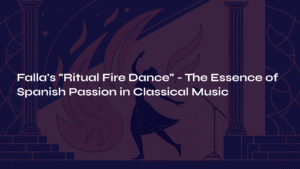Table of Contents
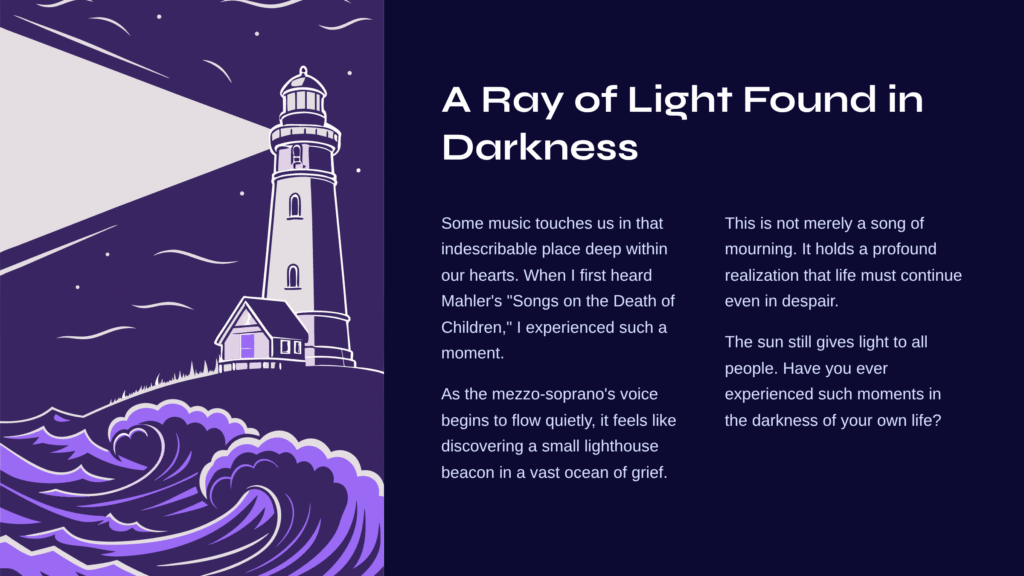
A Ray of Light Found in Darkness
Some music touches us in that indescribable place deep within our hearts. When I first heard Mahler’s “Songs on the Death of Children,” the opening song “Now the sun will rise as brightly,” I experienced such a moment. As the mezzo-soprano’s voice begins to flow quietly, it feels like discovering a small lighthouse beacon in the middle of a vast ocean of grief.
This is not merely a song of mourning. It holds a profound realization that life must continue even in despair, that the sun still gives light to all people. Have you ever experienced such moments in the darkness of your own life?
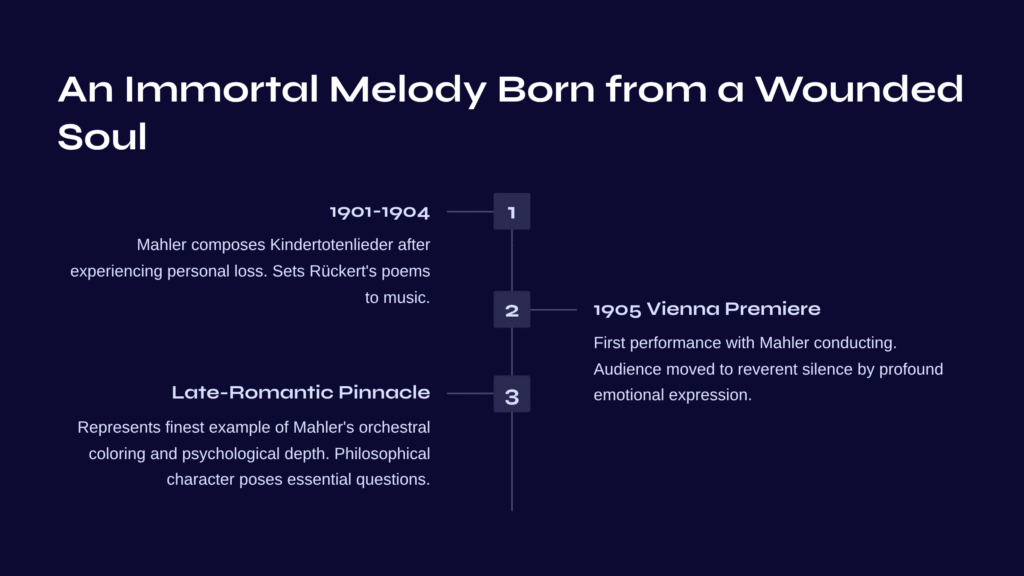
An Immortal Melody Born from a Wounded Soul
Between 1901 and 1904, when Gustav Mahler (1860-1911) composed this piece, he had already experienced personal loss. It was no coincidence that Mahler set Friedrich Rückert’s poems to music—poems the poet had written after losing his own two children. Both artists knew life’s deepest pain intimately.
From Rückert’s collection “Songs on the Death of Children,” Mahler selected five poems to create this song cycle. The first song, “Nun will die Sonn’ so hell aufgeh’n,” premiered in Vienna in 1905 with Mahler himself conducting. The audience was said to have been moved to reverent silence by the work’s profound emotional expression.
Born during the pinnacle of late-Romantic music, this work represents one of Mahler’s finest examples of orchestral coloring and psychological depth. Beyond simple sorrow, it carries a philosophical character that poses essential questions about human existence.
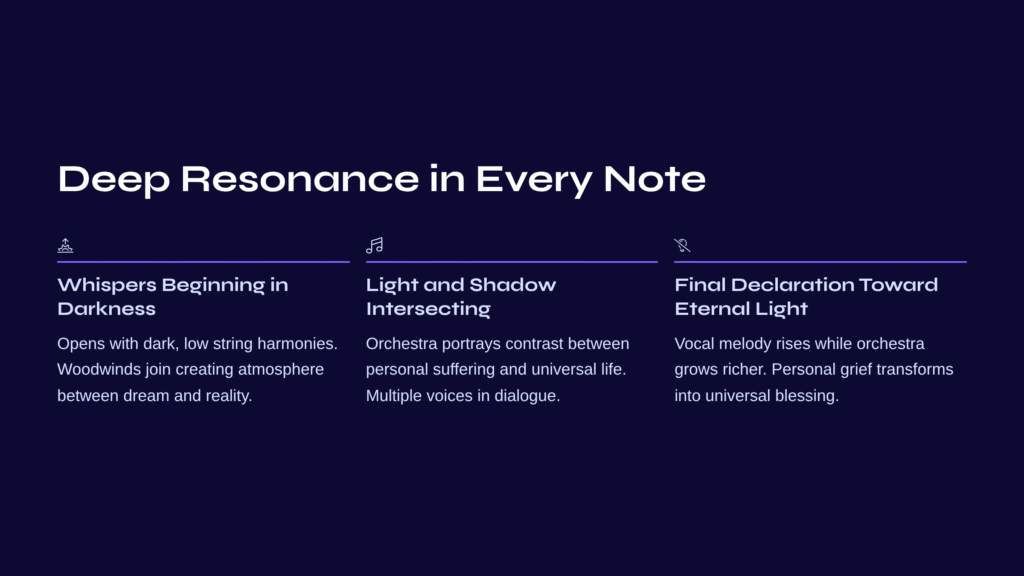
Deep Resonance in Every Note
Whispers Beginning in Darkness
The piece opens with dark, low harmonies from the strings. Like the darkest hour before dawn, the moment of awakening from deep sleep—quiet and careful. As woodwinds join one by one, they create an atmosphere reminiscent of that ambiguous boundary between dream and reality.
When the mezzo-soprano enters, the opening melody is surprisingly simple: “Nun will die Sonn’ so hell aufgeh’n”—”Now the sun will rise as brightly.” Yet how much is hidden within this simplicity! Hope and resignation, acceptance and resistance all melt into that single melodic line.
Light and Shadow Intersecting in the Middle Section
In the second verse, the music takes on more complex dimensions. “Das Unglück geschah nur mir allein!”—”The misfortune happened to me alone!” Here, the orchestra delicately portrays the contrast between personal suffering and universal life.
Mahler employs his signature “conversing orchestra” technique. When strings sing of sorrow, woodwinds answer with comfort; when brass cry out hope, timpani awaken us to reality. It’s as if multiple voices within our hearts are simultaneously in dialogue.
A Final Declaration Toward Eternal Light
In the third and fourth verses, the piece reaches its climax. “Du mußt nicht die Nacht in dir verschränken”—”You must not lock the night within yourself.” At this phrase, the vocal melody rises gradually while the orchestra grows richer.
Yet Mahler deliberately restrains any emotional explosion. Instead, he expresses with deep, warm resonance that seems to embrace the heart. In the final “Heil sei dem Freudenlicht der Welt!”—”Blessed be the joyous light of the world!”—we experience the moment when personal grief transforms into universal blessing.
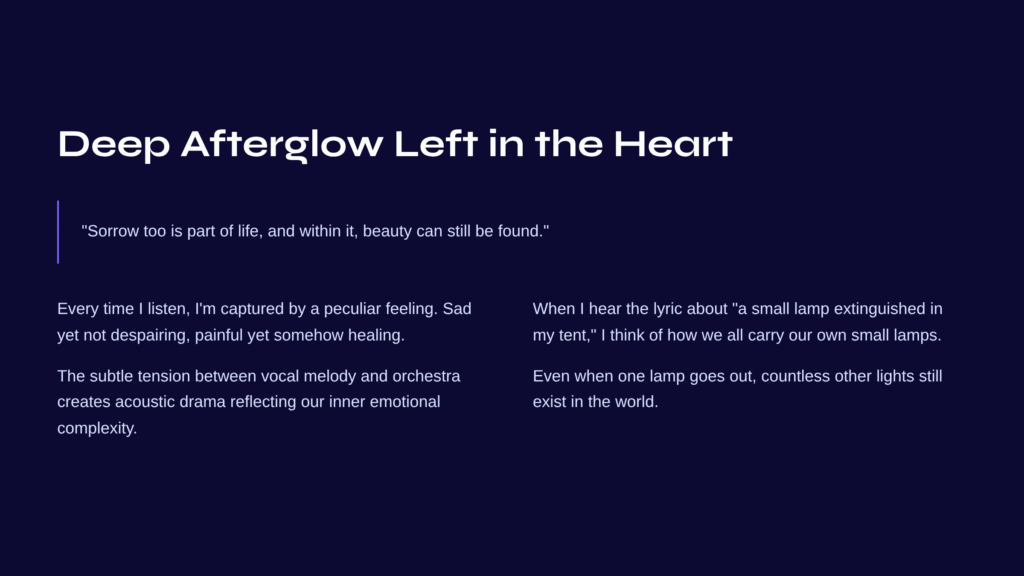
Deep Afterglow Left in the Heart
Every time I listen to this piece, I’m captured by a peculiar feeling. Sad yet not despairing, painful yet somehow healing. What Mahler expresses through music seems not simple comfort, but rather a profound realization that “sorrow too is part of life, and within it, beauty can still be found.”
The subtle tension created between the vocal melody and orchestra is particularly striking. Sometimes comforting each other, sometimes in opposition, they create an acoustic drama that perfectly reflects our inner emotional complexity.
When I hear the lyric about “a small lamp extinguished in my tent,” I think of how we all live carrying our own small lamps. And even when one lamp goes out, countless other lights still exist in the world.
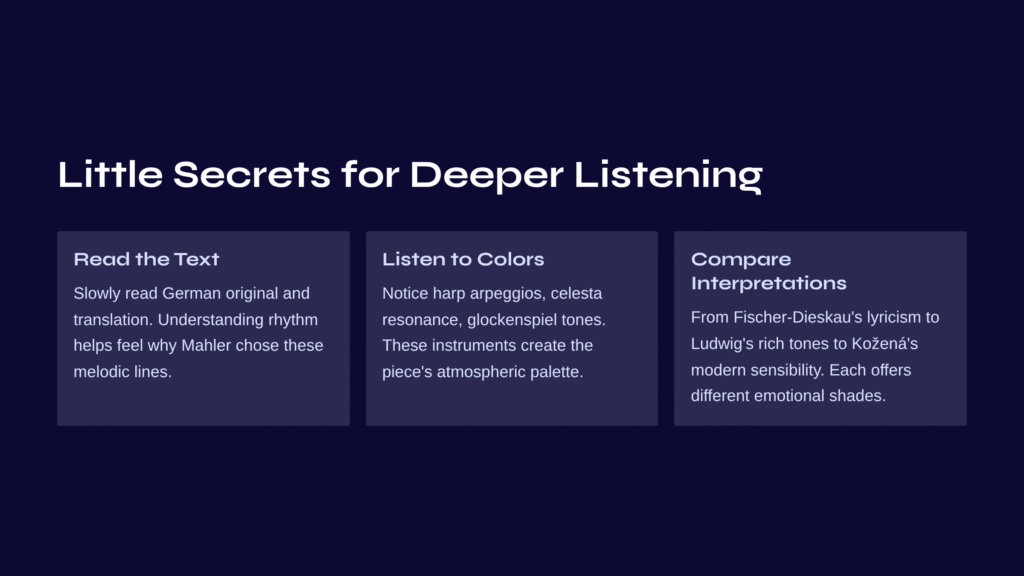
Little Secrets for Deeper Listening
If you’re hearing this piece for the first time, begin by slowly reading through the text. Understanding both the German original’s rhythm and the translated meaning simultaneously will help you feel why Mahler chose these particular melodic lines.
Second, pay attention to the orchestra’s coloristic instruments. The gentle arpeggios of the harp, the ethereal resonance of the celesta, the clear tones of the glockenspiel—these create an acoustic palette that decisively shapes the piece’s atmosphere. There’s joy in discovering when these instruments appear and what emotions they connect to.
Finally, compare different performers’ interpretations. From Dietrich Fischer-Dieskau’s lyrical approach to Christa Ludwig’s rich mezzo tones, to Magdalena Kožená’s modern sensibility—each offers different shades of sorrow and hope.
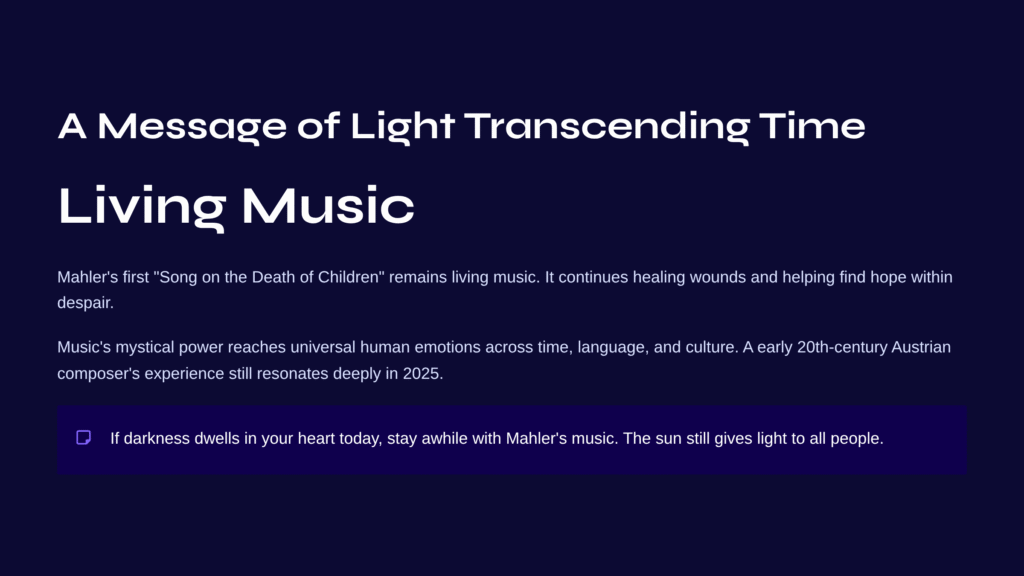
A Message of Light Transcending Time
Mahler’s first “Song on the Death of Children” is not merely a masterpiece of the past. It remains living music that continues to heal someone’s wounds and help find hope within despair at this very moment.
One of music’s most mystical powers is its ability to reach universal human emotions across time, language, and culture. Just as a early 20th-century Austrian composer’s personal experience still resonates deeply with us in 2025.
If darkness dwells in your heart today, stay awhile with Mahler’s music. The sun still gives light to all people.
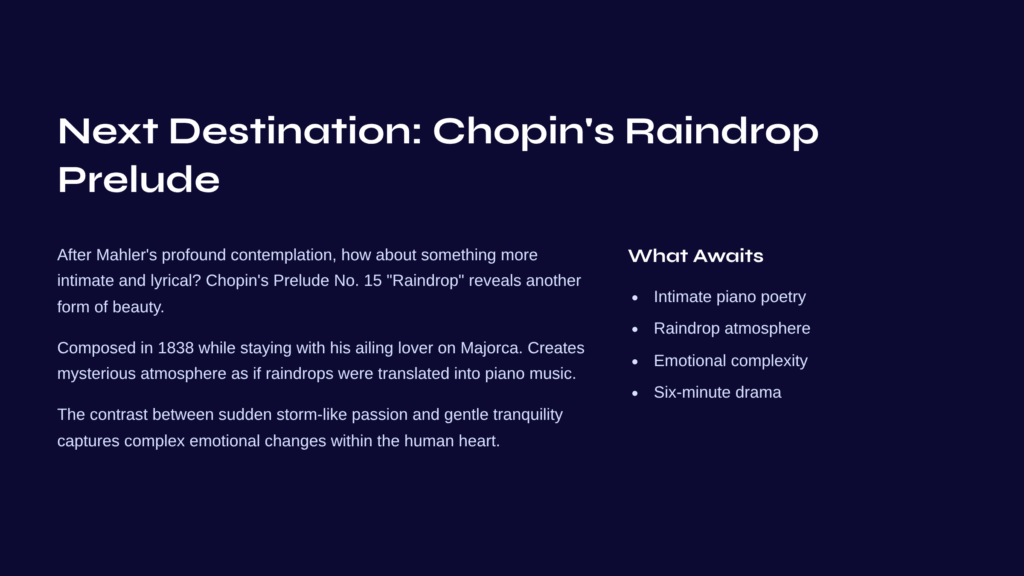
Next Destination: Chopin’s Raindrop Prelude
After Mahler’s profound contemplation, how about something more intimate and lyrical? Chopin’s Prelude No. 15 “Raindrop” reveals another form of beauty unfolding in personal space.
Composed in 1838 while staying with his ailing lover on Majorca, this piece creates a mysterious atmosphere as if raindrops falling outside the window were translated into piano music. Unlike Mahler’s orchestral grandeur, Chopin paints infinite emotional worlds with just 88 keys.
The contrast between the sudden storm-like passion in the middle section and the return to gentle tranquility perfectly captures the complex emotional changes within the human heart. The drama contained within this six-minute piece sometimes leaves deeper resonance than lengthy symphonies.
Shall we journey together into Chopin’s delicate and poetic piano world, accompanied by the sound of raindrops tapping on windows?

